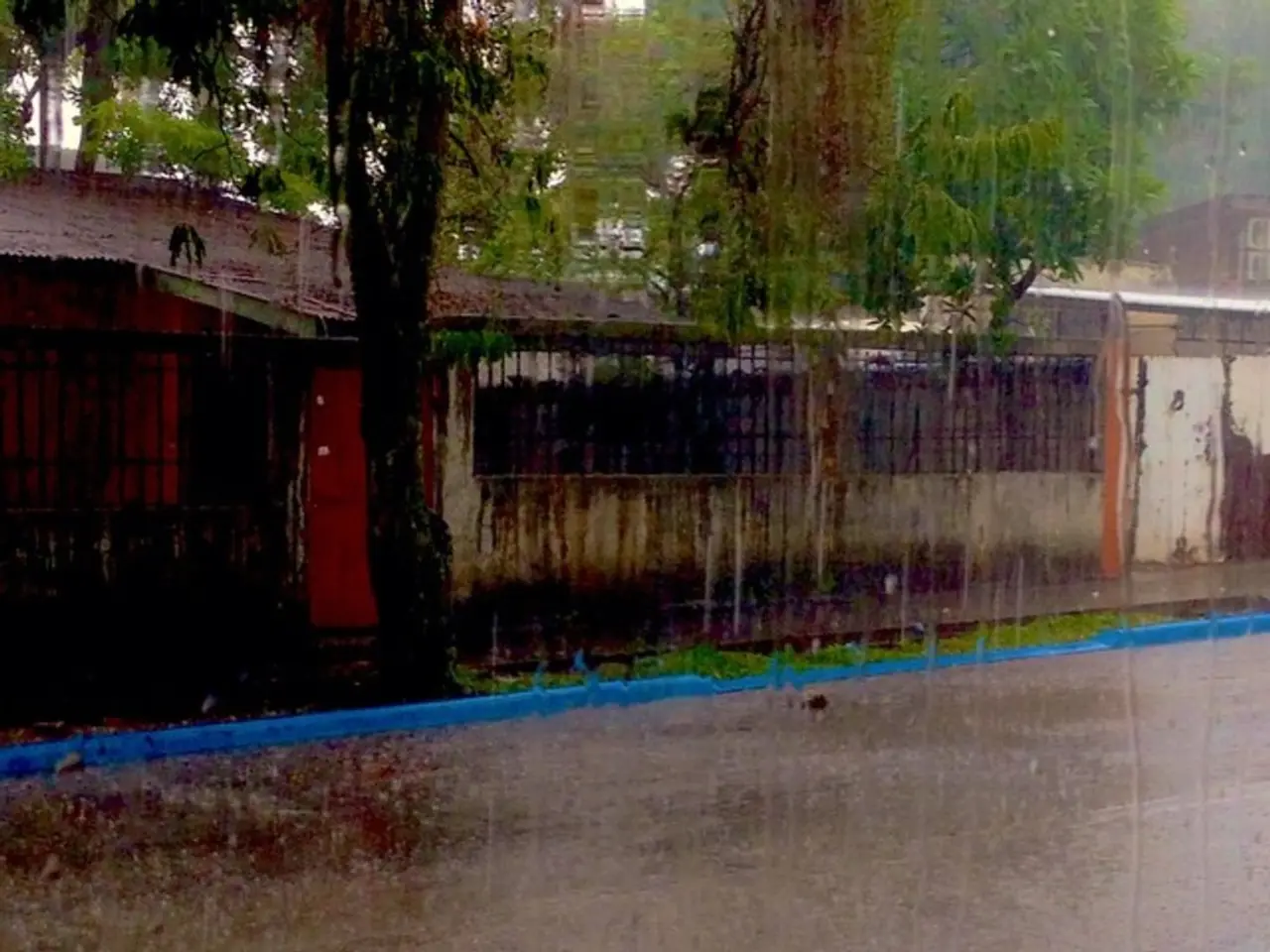Tragic Losses Due to Flooding and Landslides in Java Island
Heavy flooding and landslides on the Indonesian main island of Java have resulted in at least three fatalities, with one person still reported missing following the landslides. The popular tourist region around Bogor in West Java has experienced numerous damaged houses and a school due to landslides. Unusual heavy rainfall has also submerged parts of the capital Jakarta, causing traffic chaos and exacerbating the city's flooding issues.
The north of Jakarta, which lies below sea level, is particularly vulnerable. Not only is the area prone to flooding during heavy rain, but it is also sinking by several centimeters each year. Experts warn that the entire area could be flooded by 2050 if no action is taken.
In response to these challenges, the Indonesian government has designated the Giant Sea Wall (GSW) project along the northern coast of Java Island, including North Jakarta, as a national priority to combat tidal flooding exacerbated by climate change. The sea wall aims to protect coastal regions from rising sea levels and tidal surges.
As part of this effort, the Jakarta Provincial Government is constructing a sea wall in the Muara Angke area as a medium-term measure to mitigate tidal flooding. This serves as a crucial component of the broader National Capital Integrated Coastal Development (NCICD) project. To ensure sustainable implementation, the government plans to establish the North Coast Giant Sea Wall Authority, tasked with overseeing the ongoing construction and maintenance of the sea wall infrastructure.
The provincial government has committed to allocating substantial annual funding, with a minimum of Rp5 trillion yearly dedicated to the GSW project to ensure continuous progress and effective flood defence. Beyond structural defences, there is recognition of the need for holistic flood management. Experts recommend combining structural improvements with nature-based solutions, improved land use control, adaptive social protections, and enhanced data management to build long-term urban resilience against flooding.
The government and disaster agencies are also actively monitoring tidal flood risks, issuing advisories, and distributing aid to affected communities, indicating efforts toward improved disaster preparedness and response. These steps collectively aim to mitigate the increasing flood risks driven by climate change.
In conclusion, the current measures to prevent future flooding in North Jakarta focus heavily on constructing a robust sea wall infrastructure supported by institutional frameworks and financial commitment. Integrating broader resilience strategies addressing governance and environmental management is crucial to building a sustainable and flood-resilient city. The future of North Jakarta lies in its ability to adapt to the challenges posed by climate change and implement effective flood prevention strategies.
[1] The Jakarta Post, "Giant sea wall project to be national priority," 10 September 2020. [2] The Straits Times, "Jakarta's flood-prone areas need nature-based solutions, not just concrete walls," 15 November 2020. [3] Antara News, "Indonesia's Disaster Management Agency Prepares for Flood Risks in North Jakarta," 2 December 2020. [4] World Bank, "Indonesia: North Jakarta Flood Management Project," accessed 10 January 2021.
- To tackle the increasing flood risks brought by climate change, the Indonesian government has prioritized the Giant Sea Wall (GSW) project, not only focusing on sea wall construction in North Jakarta but also planning to establish the North Coast Giant Sea Wall Authority for ongoing maintenance and oversight.
- Beyond the sea wall infrastructure, experts in environmental science emphasize the importance of combining nature-based solutions, improved land use control, adaptive social protections, and enhanced data management to establish long-term urban resilience against flooding in North Jakarta.
- The government, along with disaster agencies, is actively monitoring weather patterns and issuing weather-forecasting advisories to minimize flood risks, while also providing aid to affected communities in the face of climate-change-induced weather anomalies, highlighting a proactive approach to disaster preparedness and response.







